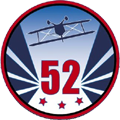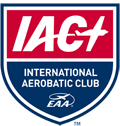


| Safety Wise | |
|
SAFETY
WISE
June 2001 |
|
|
It was at that time that training took over. The First Officer was flying that leg so he had immediately grabbed the controls when the explosion occurred. I told him as I waved my right arm, "Turn around and get the nose down"….he replied, "we don’t have ATC clearance." Well….he was new as he had only been at my airline for 3 ½ months….and at the same time a King Air Pilot was getting a full clearance to somewhere over the radio effectively blocking any attempt from us to communicate our intentions. I forcefully re-stated, "Turn around!!" He did…I was pointed in the wrong direction with two (2) engines at idle…ATC clearance or not, I wanted to get the nose pointed towards land, not the sea. We turned towards Tampa Florida descending and without clearance. Only a few seconds went by before JAX center addressed us asking us what we were doing. My intentions at that time were to land ASAP or…..perhaps sooner if I could not get at least one (1) engine to produce some thrust. They asked me the usual questions as we descended toward Tampa…something a Captain never wants to hear…."How many souls on board, how much fuel, do you want the emergency equipment?" I always write down the exact number of passengers on board before we leave the gate so I looked in front of me to the control yoke and read off the information to ATC thinking, "how could this be happening to me?"…This type of thing always happens to somebody else. I was fiddling with the throttles as we turned around towards the coast of Florida trying to figure out if I had one engine, two engines, or no engines. For a couple of seconds the thought crossed my mind that I might have to ditch this airplane in the Gulf. The vibrations continued. As we descended I listened as ATC cleared other aircraft away from our direct line to Tampa. I brought the left engine throttle gently forward…..it responded. I took the right throttle in my hands and brought it forward slowly with no response. The bottom line is that our right engine had literally blown up. The n2 (rear) section of the engine had disintegrated throwing fan blades and debris over the Gulf of Mexico. There was a flash fire that covered the tail in black soot but it extinguished itself almost immediately due to our relatively high airspeed at the time….or luck. The front section kept spinning away giving me oil pressure and generator oil pressure but no thrust. With at least one (1) good engine at my disposal, my heart rate started to slow a little. I didn't know if it too was damaged as the engines are situated fairly close together on the tail and an explosion in one engine can adversely affect the other one....but for the time being, it was giving me the thrust I needed. We went to the checklist, I made a P.A. to the passengers, and quickly fell into the routine I had practiced countless times in the simulator….a single engine approach and landing in an aircraft that was several thousand pounds over the maximum landing weight. As we turned onto final with a minimum touch down speed of 169 MPH due to our single engine configuration, checklist completed, aircraft vibrating, my one good engine at almost full power to maintain the descent rate, I saw a most welcome sight..... beautiful fire trucks and emergency equipment with lights flashing parked on both sides of the runway at every single intersecting taxiway ready to give us help if we needed it…It's hard to describe the overwhelming feeling of gratuity I had for those men and women who were ready to put their lives on the line for us if the landing went bad. The landing was a good one. After stopping on the runway and getting checked out by the emergency boss, I elected to taxi to the gate so the passengers didn't have to do the "rubber slide ride"....frankly, I didn't want to do it either. The whole experience turned out to be a non-event although I'm sure that it was a Christmas Eve that 147 passengers and five crewmembers will never forget. It wasn't until later that night that I sat at home alone in the dark, loosened my tie and said to myself....whew!….It’s nice to be alive. Although I will never forget that Christmas Eve flight, the outcome was successful due to the training the crew had received. Everybody on that crew had trained for just such a scenario. When the unbelievable happened, training took over and by rote, the mission was accomplished. Whether I knew it or not, all those hours spent in the simulator came forward when that engine blew. After a momentary hesitation with the thought that "this is not happening to me"….my crew and I reverted to our training….something we had gone over again and again and again. That day, my life and the life of my passengers depended on that training. No accolades came from my company. The engine blew and we performed as expected. That is what they train us for....that is what they expect from us. If we had screwed up, we would have surely heard from the "upper echelon". But everything went according to what they expect their pilots and crew to do because our company had taken the time to assure that we were prepared for such an event…an event that a typical airline pilot can go through an entire career without experiencing. When it gets right down to it, my butt was in the nose cone of that aircraft and if the training I had received had failed, I would have been the first to know about it. The thought could be projected that immediately after that explosion, the yaw, the vibration….I was in the zone of confusion and denial for at least a few seconds. Is it any different for any other pilot in a high performance aircraft when something unexpected goes wrong? I doubt it except for the fact that at 20,000 feet, I had much more time to think about the problem than most of us do in our aerobatic aircraft. How prepared are we for the unexpected? Unlike me or any other airline pilot, nobody in Chapter 52 is forced to go through any training. Nobody in our Chapter is required to sit in their cockpit and say to themselves, "okay, the engine just quit, what do I do, what are my options and if I decide to bail out, what is the procedure for me specifically in MY aircraft?" If you pull the canopy back, is it going to come off? When you pull the quick release on your harness, is your headset still connected to the plug in? Is your headset cord wrapped around your seatbelt or tucked into a convenient space so it doesn't flop around during maneuvers? If it is, will you snap your neck as you exit the aircraft when it catches on something? Has your parachute been recently inspected? At what altitude do you bail?…..do you have a definite "cut off point"?….or is this something you want to decide at the time? How much training should each of us put ourselves through to assure that if the unbelievable happens to us, we immediately revert to that training, without thought, without hesitation. Nobody forces us to go through emergency procedures except ourselves. The time to figure out what we will or will not do in a given decision is not when we are faced with an emergency. Many in Chapter 52 have "been there done that" and they would be the first to tell you that their training and experience perhaps got them through a situation that might have proven catastrophic to a lesser trained pilot. I doubt that anybody could argue that when the unexpected happens, you MUST revert to the training you have put yourself through. If the unexpected ever happens to you, I guarantee that you will sit there for a couple of seconds in disbelief….and sometimes you just don’t have the time. Train yourself. Go through your bail out procedures, establish a minimum altitude to exit the aircraft, know by rote the exact sequence you will utilize to exit the aircraft so you don’t hurt yourself. While flying, always keep yourself in a position where you have options available if a fuel line bursts, an oil line comes disconnected or a bird strike takes out a guide wire. Don’t assume that every flight you take will be a non event…..it doesn’t always happen to other guy.
|
|
| .. | |
| Previous Safety Wise articles: | |
|
|